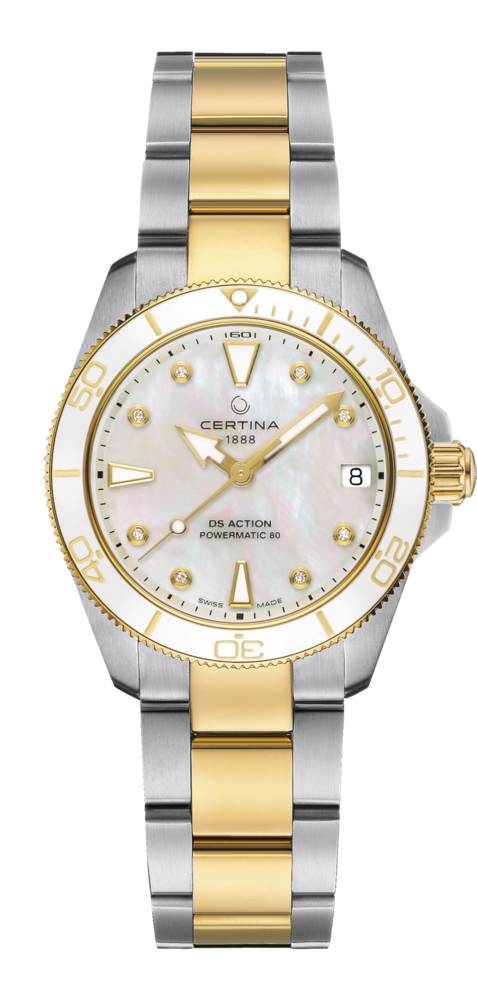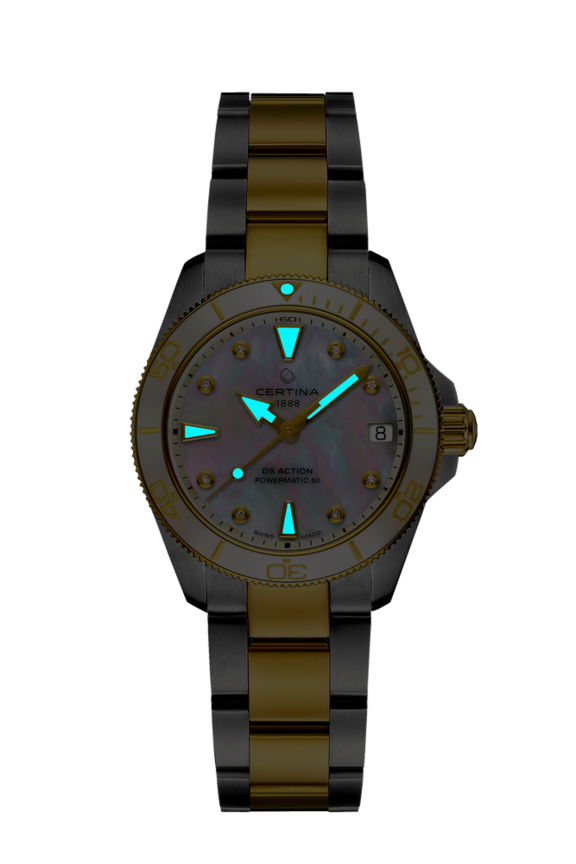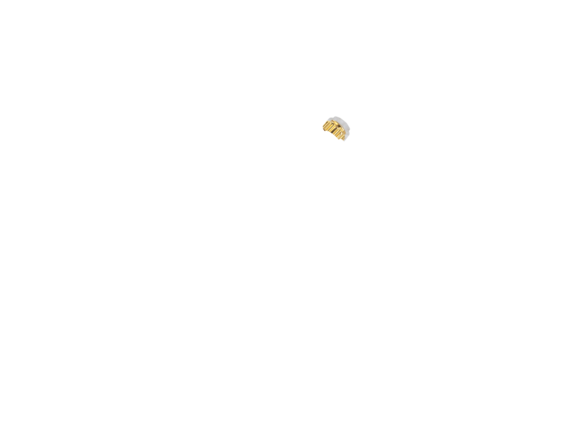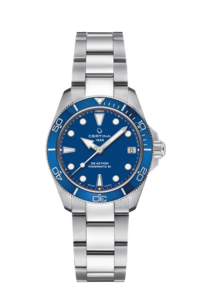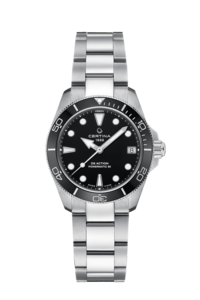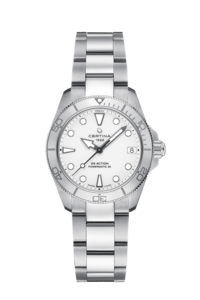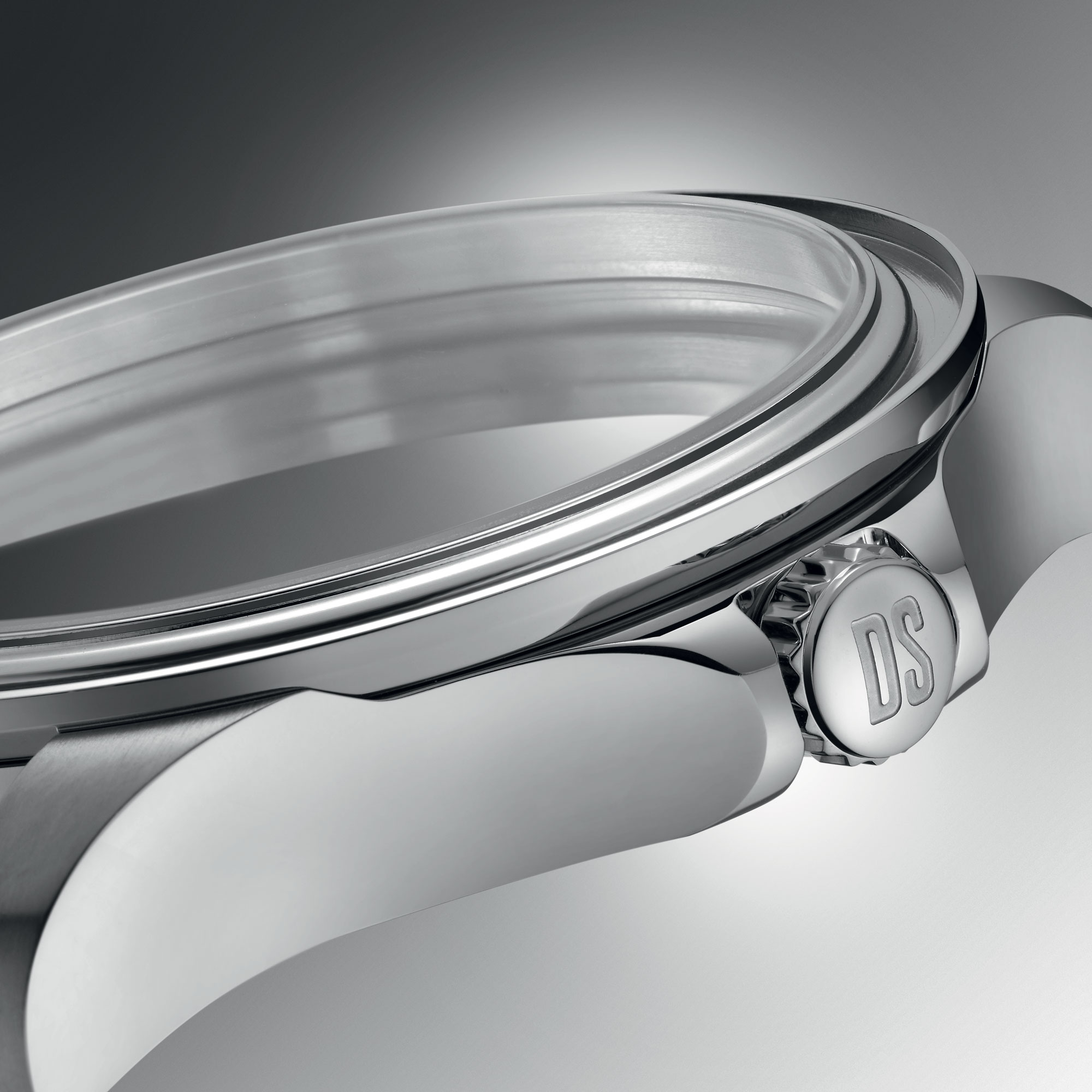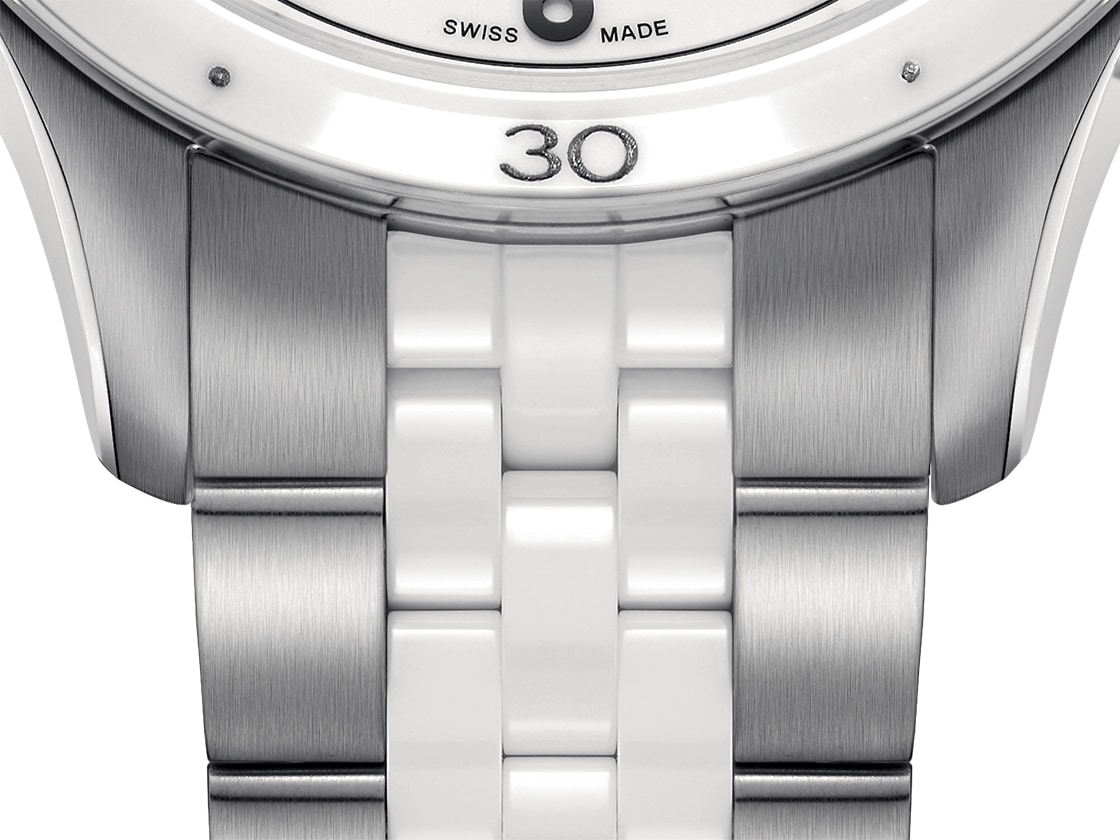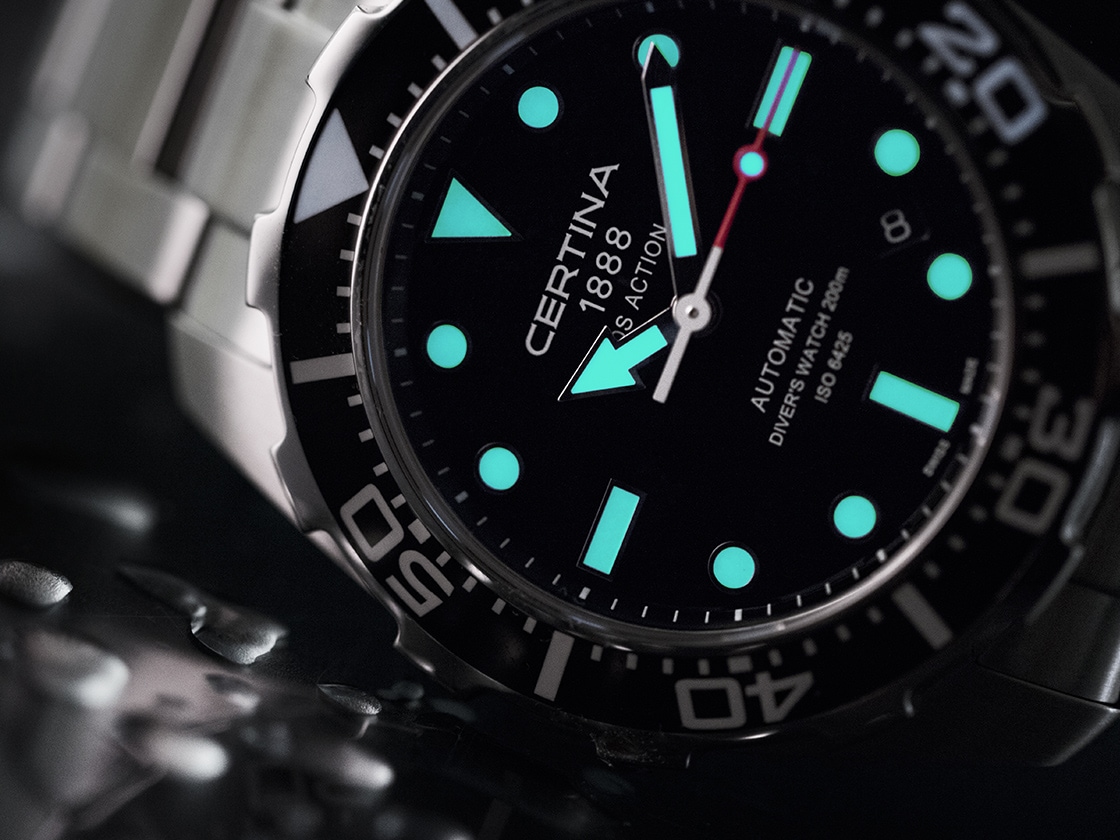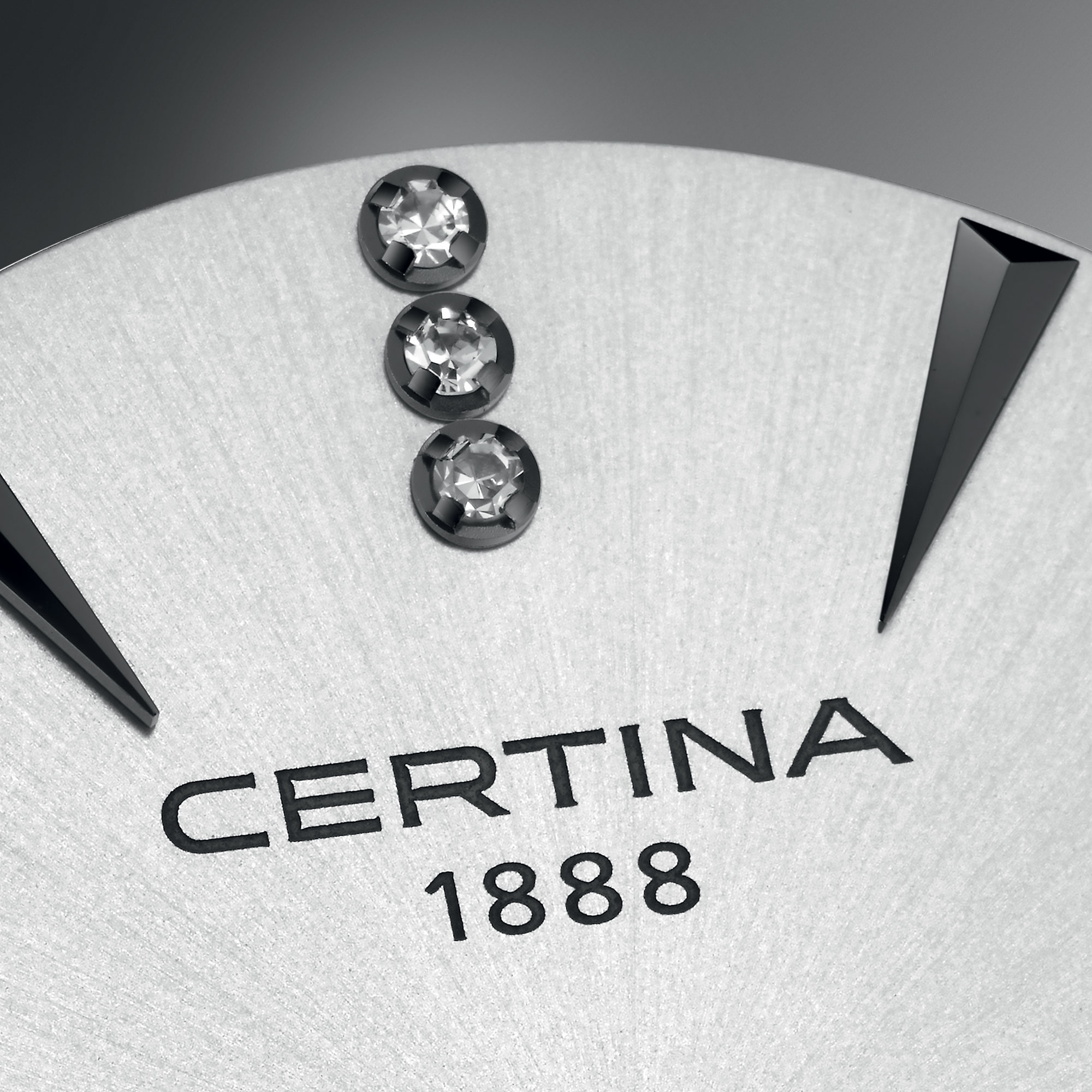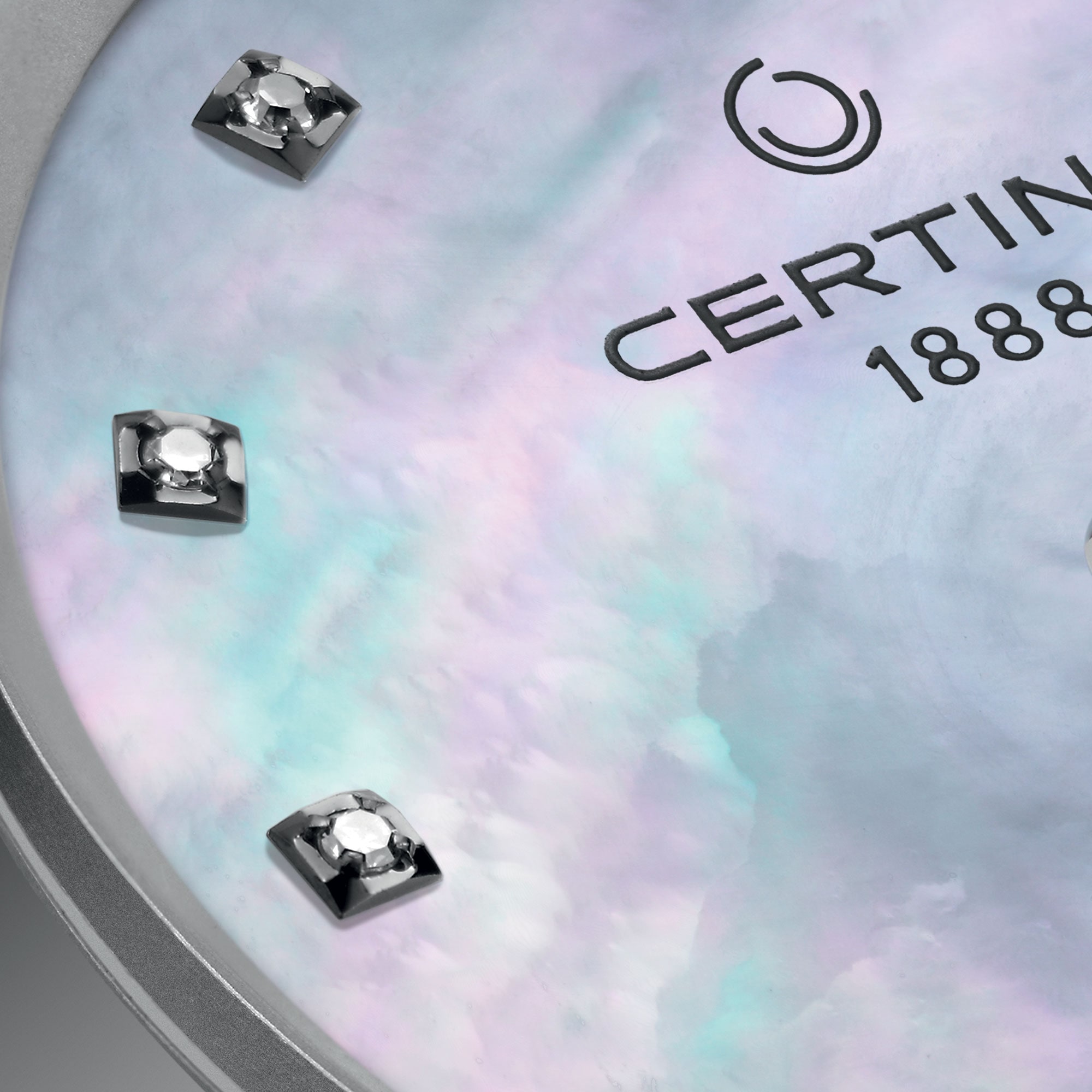Variants
Technical specifications
Materials
Stainless steel
The 316L stainless steel which Certina uses for cases, bracelets and clasps, for instance, is extremely resistant, corrosion-resistant and hypoallergenic. It contains only a very small proportion of nickel, which is not released when worn and therefore does not trigger any nickel allergies.
Ceramic
The ceramic used in watchmaking is hardened in a firing process at a temperature of more than 900°C. Certina's ceramic bezels, cabochons and strap elements not only look good – they are also scratch-resistant and hypoallergenic, and retain their intense colour and shine for a long time.
Super-LumiNova®
Super-LumiNova® (SLN) is a luminescent material with phosphorescent properties. In the dark, the SLN type BG W9 used by Certina emits the light stored as a blue shimmer. SLN does not damage your health in any way and is used in coatings on hands, indices and bezels. It progressively loses its phosphorescence in darkness, but automatically regains it under light.
PVD
PVD is the abbreviation for physical vapour deposition and refers to a modern coating method through which a material, for instance gold, can be transferred in a vaporised form, to a steel or titanium substrate. The result is as fine as it is durable. PVD is resistant, corrosion-resistant and very hard.
Diamonds
Considered to be the king of all gemstones, diamond is the hardest natural material in the world. The quality of diamond is classed according to the “four C's”:Cut: The more facets the stone has, the more intensely it reflects the light. Certina uses brilliants (full-cut diamonds) in its watch-cases and single-cut diamonds on dials.Colour: At first sight you might think that diamonds are white. Experts, however, can identify their subtle shades of colour. Certina uses Top Wesselton diamonds only.Clarity: Almost all diamonds have tiny flaws, called inclusions, which can be seen with a jeweller’s loupe. Certina uses stones in the highly desirable VSI – very small inclusions – class.Carat: The unit indicating the weight of a diamond. One carat is equivalent to 0.2g.Certina only uses diamonds which meet the requirements of the Kimberley Process, an international system for certifying raw diamonds. The system aims to stop the trade in smuggled diamonds (so-called “blood diamonds”).
Mother-of-pearl
This organic material, which Certina uses for particularly precious dials on women's watches, comes from the innermost layer of shell of some molluscs. Iridescent, shimmery mother-of-pearl is very brittle and must be processed with great care, which makes it even more valuable.
Sapphire crystal
Sapphire watch crystal is made of aluminium oxide power (Al2O3) heated to over 2000°C. The resultant sapphire nugget is cut with great precision into fine slices, trimmed and polished. Sapphire is extremely scratch-resistant, shock-resistant and is very transparent. This is why sapphire crystal is an essential element in the DS Concept and is used by Certina in all of its models to protect the dials.
Stainless steel
The 316L stainless steel which Certina uses for cases, bracelets and clasps, for instance, is extremely resistant, corrosion-resistant and hypoallergenic. It contains only a very small proportion of nickel, which is not released when worn and therefore does not trigger any nickel allergies.
Ceramic
The ceramic used in watchmaking is hardened in a firing process at a temperature of more than 900°C. Certina's ceramic bezels, cabochons and strap elements not only look good – they are also scratch-resistant and hypoallergenic, and retain their intense colour and shine for a long time.
Super-LumiNova®
Super-LumiNova® (SLN) is a luminescent material with phosphorescent properties. In the dark, the SLN type BG W9 used by Certina emits the light stored as a blue shimmer. SLN does not damage your health in any way and is used in coatings on hands, indices and bezels. It progressively loses its phosphorescence in darkness, but automatically regains it under light.
PVD
PVD is the abbreviation for physical vapour deposition and refers to a modern coating method through which a material, for instance gold, can be transferred in a vaporised form, to a steel or titanium substrate. The result is as fine as it is durable. PVD is resistant, corrosion-resistant and very hard.
Diamonds
Considered to be the king of all gemstones, diamond is the hardest natural material in the world. The quality of diamond is classed according to the “four C's”:Cut: The more facets the stone has, the more intensely it reflects the light. Certina uses brilliants (full-cut diamonds) in its watch-cases and single-cut diamonds on dials.Colour: At first sight you might think that diamonds are white. Experts, however, can identify their subtle shades of colour. Certina uses Top Wesselton diamonds only.Clarity: Almost all diamonds have tiny flaws, called inclusions, which can be seen with a jeweller’s loupe. Certina uses stones in the highly desirable VSI – very small inclusions – class.Carat: The unit indicating the weight of a diamond. One carat is equivalent to 0.2g.Certina only uses diamonds which meet the requirements of the Kimberley Process, an international system for certifying raw diamonds. The system aims to stop the trade in smuggled diamonds (so-called “blood diamonds”).
Mother-of-pearl
This organic material, which Certina uses for particularly precious dials on women's watches, comes from the innermost layer of shell of some molluscs. Iridescent, shimmery mother-of-pearl is very brittle and must be processed with great care, which makes it even more valuable.
Sapphire crystal
Sapphire watch crystal is made of aluminium oxide power (Al2O3) heated to over 2000°C. The resultant sapphire nugget is cut with great precision into fine slices, trimmed and polished. Sapphire is extremely scratch-resistant, shock-resistant and is very transparent. This is why sapphire crystal is an essential element in the DS Concept and is used by Certina in all of its models to protect the dials.
